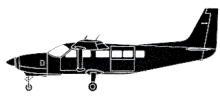Incident Overview

Description
On the day before the occurrence, the accident aircraft arrived in Winnipeg (YWG), on a flight from Thunder Bay. The aircraft was parked in a heated hangar overnight and was pulled outside at about 04:10 local time. The pilot reviewed the weather information and completed planning for the flight, which was estimated to take two hours and six minutes. The aircraft was refuelled and taxied to Apron V, where it was loaded with cargo. After loading was complete, the pilot obtained an instrument flight rules (IFR) clearance for flight 8060 to Thunder Bay, taxied to runway 36, received takeoff clearance, and departed. The aircraft climbed on runway heading for about one minute to an altitude of 1300 feet above sea level (asl), 500 feet above ground level (agl). The flight was cleared to 9000 feet asl direct to Thunder Bay, and the pilot turned on course. The aircraft continued to climb, reaching a maximum altitude of 2400 feet asl about 2.5 minutes after takeoff. At 05:41 the pilot reported: “… eight zero six zero need an immediate back to the field”. The controller replied: “Sixty, say again,” after which the pilot reported: “Need an immediate back to the field.. Im iced-up to the point where I need to come back.” The controller then gave instructions to return to Winnipeg: “Morningstar eighty sixty turn right turn heading 250 and if you are able maintain 2500”. The pilot replied that she would not be able to maintain that altitude. The controller then instructed the pilot to turn right to heading 280 for runway 31. The runway lights were turned up to the brightest and the controller reported that she would have the airport at her two o’clock position at about three miles. The Cessna did not make it and crashed on the Canadian National main railway track about 200 yards east of the intersection of Osborne Street and Corydon Avenue and burst into flames. FINDINGS AS TO CAUSES AND CONTRIBUTING FACTORS: 1. The aircraft departed at a weight exceeding the maximum take-off weight and the maximum weight for operation in icing conditions. 2. After departure from Winnipeg, the aircraft encountered in-flight icing conditions in which the aircraft’s performance deteriorated until the aircraft was unable to maintain altitude. 3. During the attempt to return to the Winnipeg International Airport, the pilot lost control of the aircraft, likely with little or no warning, at an altitude from which recovery was not possible.
Primary Cause
Excessive weight exceeding maximum take-off weight and maximum weight for operation in icing conditions, combined with in-flight icing conditions hindering performance.Excessive weight exceeding maximum take-off weight and maximum weight for operation in icing conditions, combined with in-flight icing conditions hindering performance.Share on:





